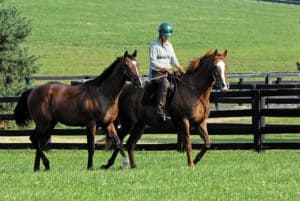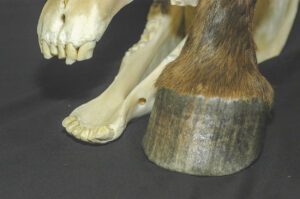Transitioning Breeding Mares From Anestrus to Estrus

They discussed the topic at the 2018 American Association of Equine Practitioners Convention, held Dec. 1-5, in San Francisco, California. Charlie Scoggin, DVM, Dipl. ACT, from Rood & Riddle Equine Hospital, in Lexington, Kentucky, and Dirk Vanderwall, DVM, Dipl. ACT, professor of equine reproduction at Utah State University, in Logan, co-mediated a Table Talk session about transitioning mares. The format allowed attendees to share their practical experience, as well as related research.
Transitional Mares 101
Most, but not all, nonpregnant mares enter a state of reproductive “winter quiescence” when the days become shorter. This annual event is called anestrus and means the mare isn’t fertile, which (in nature) prevents her from foaling during months of inhospitable weather and limited food supply.
These broodmares subsequently transition back into their regular cycles as day length increases. However, if owners are hoping for an early season foal, this transition might require human intervention in the form of artificial lights or medical treatment
Create a free account with TheHorse.com to view this content.
TheHorse.com is home to thousands of free articles about horse health care. In order to access some of our exclusive free content, you must be signed into TheHorse.com.
Start your free account today!
Already have an account?
and continue reading.

Related Articles
Stay on top of the most recent Horse Health news with


















